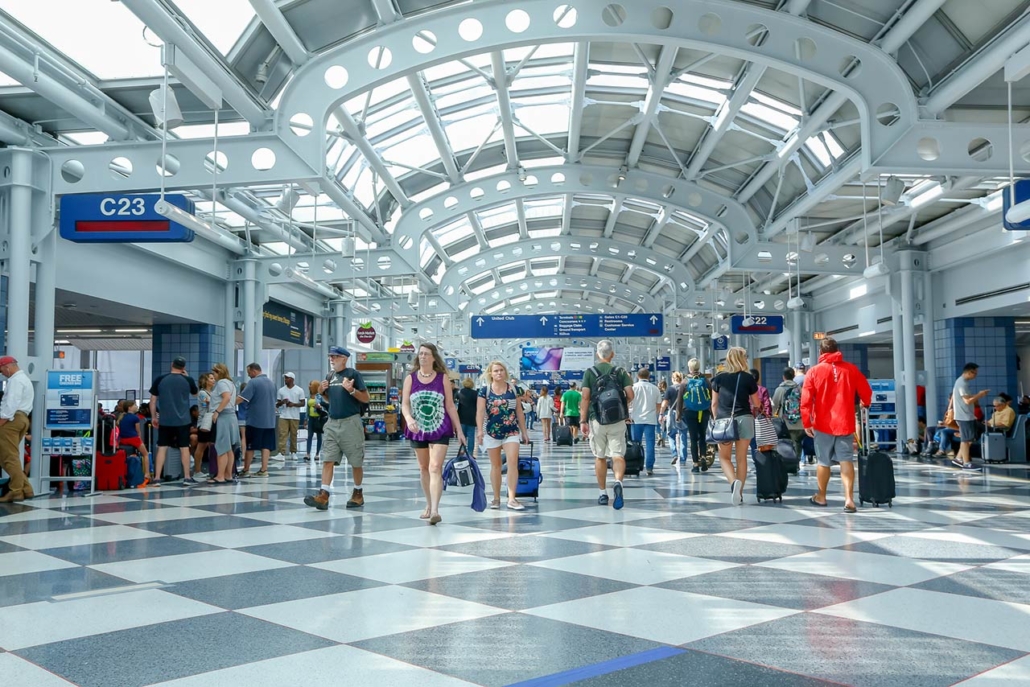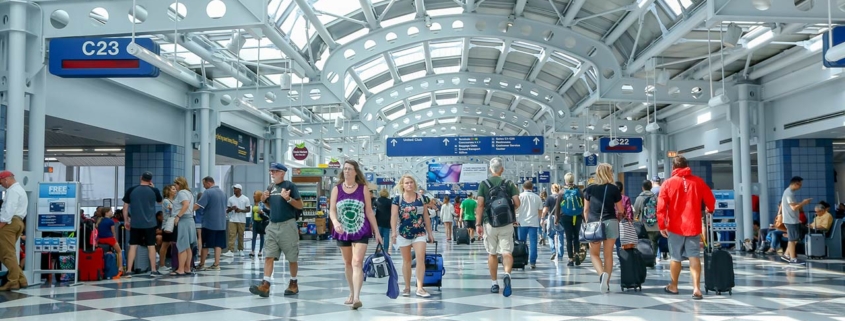Neighborhood News: Flying the friendly skies at Chicago’s O’Hare International Airport

Merry holiday season to one and all! Welcome also to the season of travel, which is also upon us.
Criss-crossing the country is commonplace these days. But before Midway and O’Hare International Airport, travel for the ordinary person or family was primarily by train, bus or car. While business flights had been around since the mid-1920’s, it’s fair to say that the modern era of commercial flight in the United States started at O’Hare Airport.
Wait…that’s in Chicago?
O’Hare is situated at the farthest Northwest corner of the City of Chicago, between Bensenville and Rosemont, on land that was annexed from Western DuPage County and was largely fields prior to building O’Hare.
Beginnings…
During World War II, the land was home to a Douglas aircraft assembly plant. Over 600 C-54s were built there during the war years and flown out to various deployments. After the war, the plant was torn down and renamed Orchard Field. Its code has remained ‘ORD’ in reference to its original name of Orchard.
Up to that time, the world flew to and from Midway Airport on Chicago’s Southwest Side. But constraints on building out or adding additional runway spaces caused Chicago’s City Council to look elsewhere for expansion.
According to Wikipedia sources, O’Hare International Airport was the first major airport planned after World War II. In 1945, Chicago mayor Edward Kellyappointed a committee to choose and negotiate the rights to the land. In 1949, according to FlyChicago.com, the Chicago City Council renamed Orchard Field to honor naval aviator Lieutenant Commander Edward H. “Butch” O’Hare, a Medal of Honor recipient from Chicago. When O’Hare opened, it had just four intersecting concrete runways, and was primarily used by the Air Force during the Korean War.
As Wikipedia tells it, architect Ralph H. Burke devised an airport master plan based on the pioneering idea of “split finger terminals”, allowing a terminal building to be attached to “airline wings” (concourses), each providing space for gates and planes.
Burke’s design also included underground refueling, direct highway access to the front of terminals, and direct rail access from downtown, all of which are utilized at airports worldwide today.
In 1955, according to FlyChicago.com, O’Hare officially opened to commercial air traffic; the airport served 176,902 passengers in its first year. In 1957, a fifth parallel diagonal runway was added to the west side of the airfield.
O’Hare’s first international terminal opened in August 1958, and by April 1959 the airport had expanded to 7,200 acres with new hangars, terminals, parking and other facilities.
Two factors contributed to its ability to surpass Midway: 1) Midway Airport could not handle the new Boeing 707 and the Douglas DC-8, and the expansion in the use of jets. 2) The expressway link to downtown Chicago, now known as the Kennedy Expressway, was completed in 1960. Simpleflying.com recounts that by 1961, it was the second busiest airport in the US, with 9.62 million passengers that year.
Innovations
O’Hare’s innovative design pioneered concepts such as concourses, direct highway access to the terminal, jet bridges, and underground refueling systems.
Today
O’Hare continues to be owned and operated by the City of Chicago. The airport is managed by the Chicago Department of Aviation (CDA) and is of the busiest airport systems in the world.
United Airlines’ Terminal 1 (dubbed “The Terminal for Tomorrow”), was designed by architect Helmut Jahn, as Wikipedia tells it…it was built between 1985 and 1987, and is best known for its futuristic curved glass forms and its connecting tunnel, illuminated with a neon installation titled ‘Sky’s the Limit (1987)’ by Canadian artist Michael Hayden, which plays an airy, slow-tempo version of George Gershwin’s “Rhapsody in Blue.’
While you await your flight, they’ve made sure that you’ll have a taste of Chicago as well. Local, well-known restaurants such as Frontera, Billy Goat Tavern, and the Publican provide travelers a sample of Chicago’s diverse food scene.
O’Hare flies non-stop flights to 214 destinations in North America, South America, the Caribbean, Europe, Africa, Asia, the Middle East, Oceania, and the North Atlantic region as of November 2022, according to Wikipedia sources. As of 2023, O’Hare is considered the world’s “most connected” airport, and remains in the top five busiest airports internationally.
Alison Moran-Powers and Dean’s Team Chicago



